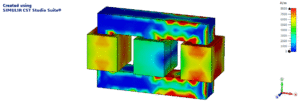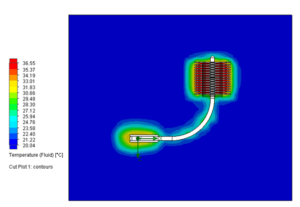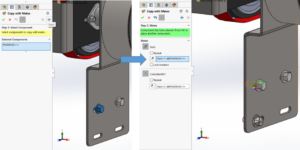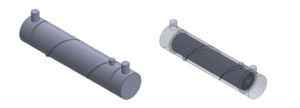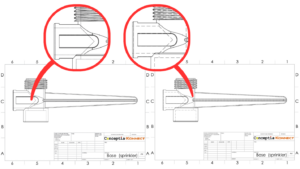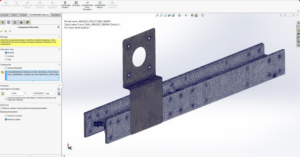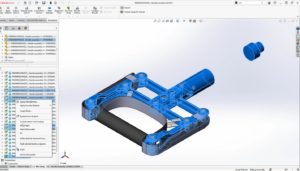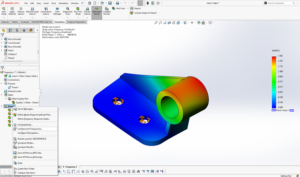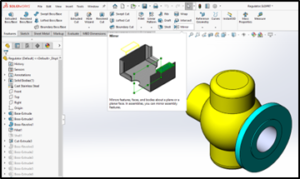It is important that you use a sufficiently refined mesh to ensure that the results from your simulation are accurate. The numerical solution for your FEA model will tend toward a unique value as you increase the mesh density. The computer resources required to run your simulation also increase as the mesh is refined. The mesh is said to be converged when further mesh refinement produces a negligible change in the solution.
As you gain experience, you will learn to judge what level of refinement produces a suitable mesh to give acceptable results for most simulations. However, it is always good practice to perform a mesh convergence study, where you simulate the same problem with a finer mesh and compare the results. You can have confidence that your model is producing a mathematically accurate solution if the two meshes give essentially the same result.
Mesh Convergence for Connector Lug.
We use the geometry of a connecting lug to demonstrate mesh refinement study using four different mesh densities using standard mesh (first order elements). The number of mesh elements used in each case is indicated in the figure.


We consider the influence of the mesh density on three particular results from this model:
- The displacement at the bottom of the hole.
- The peak von Mises stress at the stress concentration on the bottom surface of the hole.
- The peak von Mises stress where the lug is attached to the parent structure.

The results for each of the four mesh densities are compared in the table below.
| Mesh | Max displacement at bottom inner surface of hole (mm) | Max Von Mises stress at bottom inner surface of hole (N/mm2) | Max stress at Attachment (N/mm2) |
|---|---|---|---|
| Coarse | 0.0378 | 50.175 | 63.045 |
| Normal | 0.0379 | 54.703 | 63.679 |
| Fine | 0.0382 | 56.909 | 92.827 |
| Very Fine | 0.0382 | 57.272 | 94.214 |
The coarse mesh predicts less accurate displacements at the bottom inner surface of hole, but the normal, fine, and very fine meshes all predict similar results. The normal mesh is, therefore, converged as far as the displacements are concerned.
The peak stress at the bottom inner surface of the hole converges much more slowly than the displacements because stress and strain are calculated from the displacement gradients; thus, a much finer mesh is required to predict accurate displacement gradients than is needed to calculate accurate displacements.
Mesh refinement significantly changes the stress calculated at the attachment of the connecting lug; it continues to increase with continued mesh refinement. A stress singularity exists at the corner of the lug where it attaches to the parent structure. Theoretically the stress is infinite at this location; therefore, increasing the mesh density will not produce a converged stress value at this location.
This singularity occurs because of the idealizations used in the finite element model. The connection between the lug and the parent structure has been modeled as a sharp corner, and the parent structure has been modeled as rigid. These idealizations lead to the stress singularity. In reality there probably will be a small fillet between the lug and the parent structure, and the parent structure will be deformable, not rigid. If the exact stress in this location is required, the fillet between the components must be modeled accurately and the stiffness of the parent structure must also be considered.

It is common to omit small details like fillet radii from a finite element model to simplify the analysis and to keep the model size reasonable. However, the introduction of any sharp corner into a model will lead to a stress singularity at that location. This normally has a negligible effect on the overall response of the model, but the predicted stresses close to the singularity will be inaccurate.
Coarse meshes are often adequate to predict trends and to compare how different modeling concepts behave relative to each other. However, you should use the actual magnitudes of displacement and stress calculated with a coarse mesh with caution.

